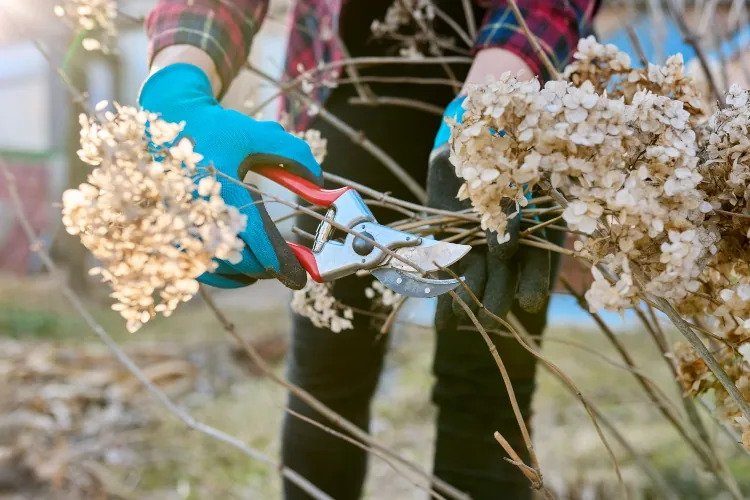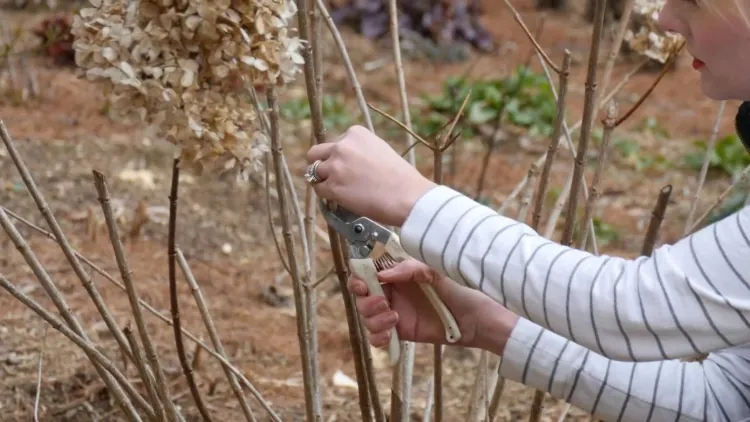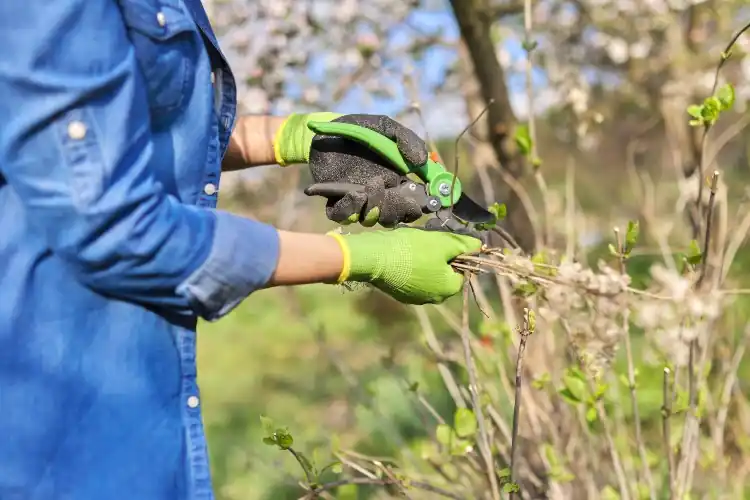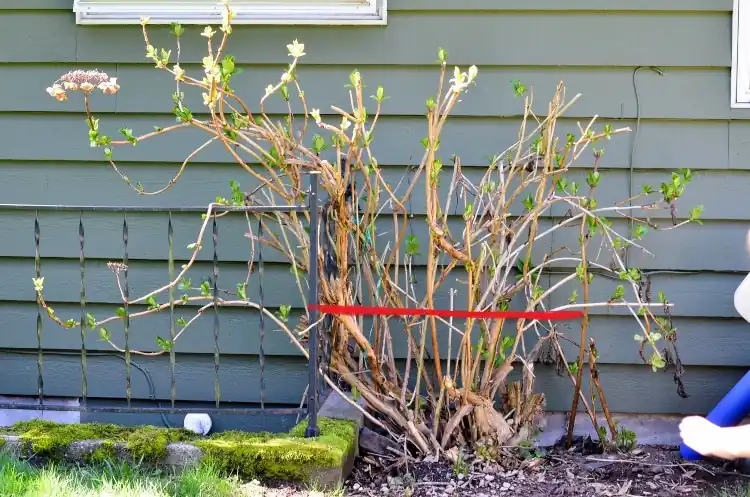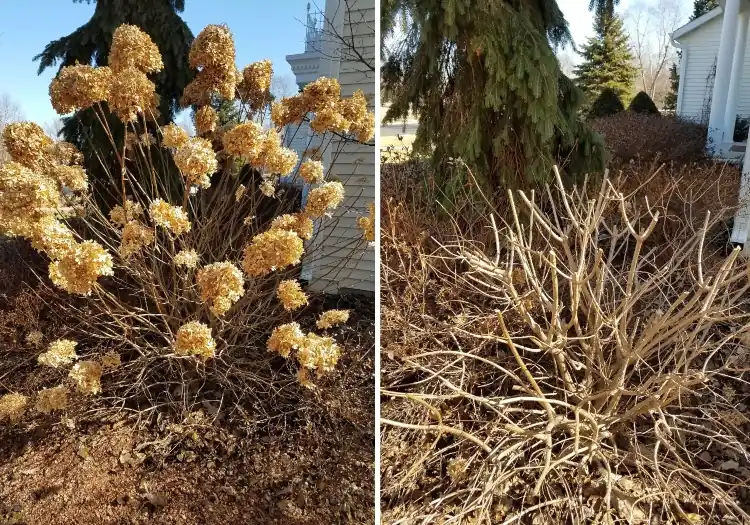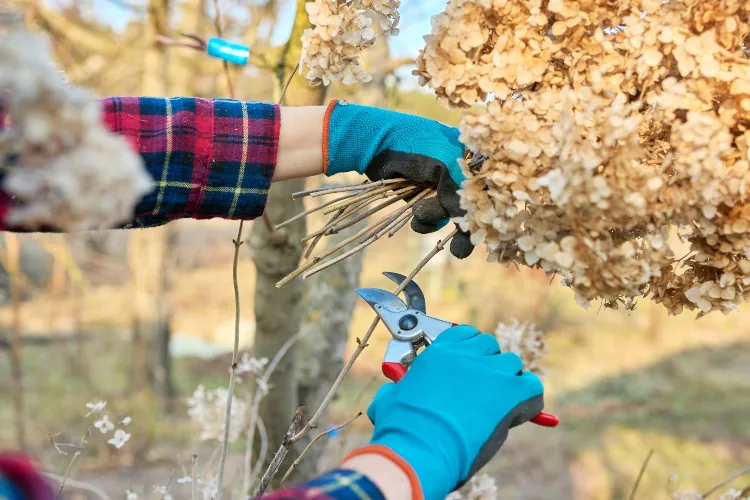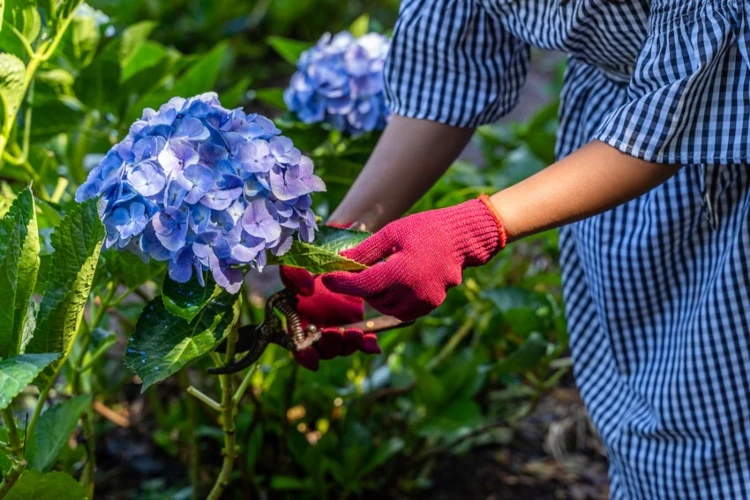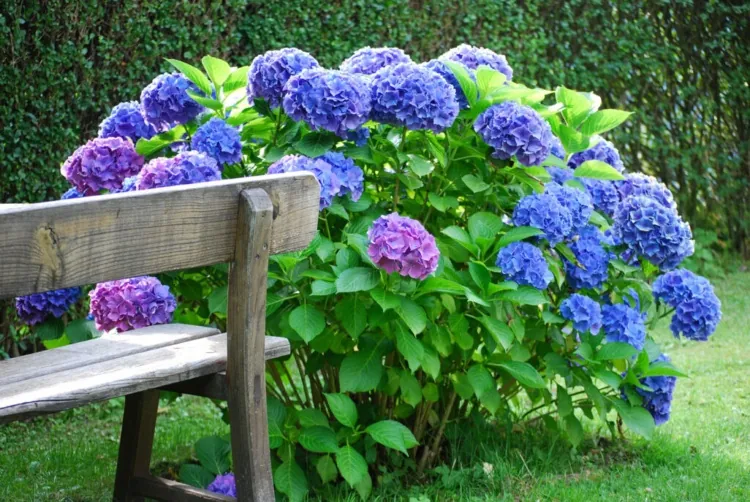Whether in a pot for the terrace or balcony or as an ornamental shrub in the garden, hydrangeas are a true classic. Nevertheless, for most hobby gardeners the question for pruning hydrangeas arises. Basically, the ornamental plant can tolerate pruning well, as long as it is done at the right time. How you prune the plant is also important.
Pruning Hydrangeas: When Should the Cutting Be Done?
Most hydrangea varieties, such as the climbing and farmer’s hydrangea, start flowering in the previous year. In the months of December to March, the buds of the flowers are clearly visible. This greatly facilitates the pruning, which takes place directly above the new buds.
The right time for this grooming cut is therefore spring. Then the old shoots without flower buds can be removed.
- Older shrubs are pruned for rejuvenation. The old shoots without buds are cut off up to 15 – 20 cm above the ground.
- Young bushes are pruned very carefully. Basically, they are only thinned out a little, dead plant parts are removed. Always make sure to cut above the new flower buds. The young plants are also sensitive to frost. So it happens that individual branches freeze in winter. These can be quickly identified by their yellow color and must also be removed. Scratch off the bark of the affected parts of the plant and check whether the shoots are green or yellowed.
Save Frozen Hydrangeas with a Caring Pruning
Hydrangeas are sensitive to frost and can partially freeze in late autumn and winter. However, frost damage also occurs in spring, because the new shoots and leaves cannot withstand sub-zero temperatures. Experienced hobby gardeners can assess the frost damage quite well and see immediately whether the branches are affected. Beginners can use the color of the shoots as a guide – brown shoots must be cut off.
Why Aren’t My Hydrangeas Blooming?
In summer and autumn you suddenly realize that the hydrangea does not produce flowers. Very often it is because not only the old but also the new flower buds have been removed during the pruning.
Pruning Panicle Hydrangea: A Strong Pruning Is Required
In contrast to the other hydrangeas, the panicle hydrangea needs a strong pruning in the spring. That’s because it doesn’t form its flower buds until spring. If all shoots are cut back close to the ground in spring, the plant will sprout even more vigorously. However, leave at least one pair of eyes so that it can produce flowers this year.
The panicle hydrangea is characterized by a very strong growth and must therefore be thinned out every two to three years. For this purpose, in the spring, the shoots that are below and get very little light are removed.
As long as the weather permits, the panicle hydrangea can also be pruned in autumn after the end of the flowering period. But you have to be very careful when choosing the right time, otherwise the plant could freeze to death.
Incidentally, the same pruning rules also apply to the snowball hydrangea.
How to Prune Potted Hydrangeas?
Potted hydrangeas are actually either a farmer’s hydrangea or bigleaf hydrangea. The same rules apply: Cut above the new flower buds. However, only the yellowed umbels are removed. A pruning is out of the question for the potted plant, it will not be able to recover well or at all. In the case of annual plants, pruning can also be omitted.
When to Cut Climbing Hydrangeas?
In contrast to the other hydrangea species, climbing hydrangeas are cut immediately after the end of the flowering period.
What You Should Consider When Pruning?
There are a few things to keep in mind:
- Wear gardening gloves. Hydrangeas are slightly poisonous plants and can cause allergies or skin irritation if touched.
- Use sharp pruning shears. Try to make the cleanest possible cut so the plant can heal faster and better.
- Cut the hydrangeas only once a year. It is best to prune the plants in spring.
Pruning Hydrangeas: The Right Care After The Cut
Would you like to make the hydrangeas bloom? Then you should properly care for them after the cut in the spring.
- Fertilize. Provide the hydrangeas in the garden with special hydrangea fertilizer to promote growth and later extend the flowering period.
- Potted hydrangeas are only allowed outside after the ice period. Then you can also fertilize them.
- Cover the freshly cut plants with fleece or brushwood to protect them from night frost.

